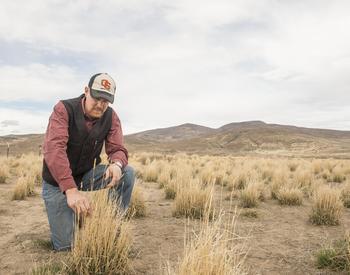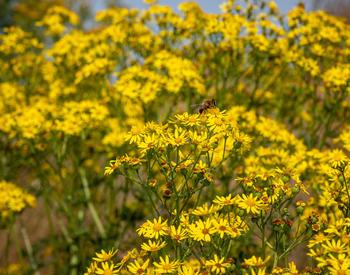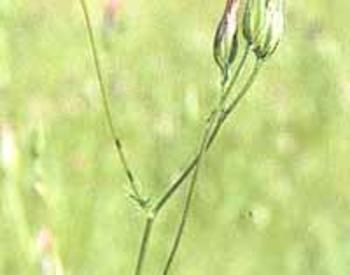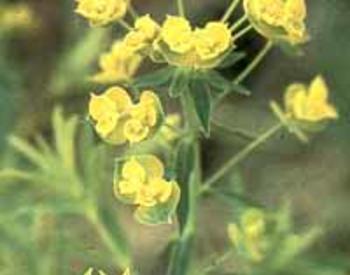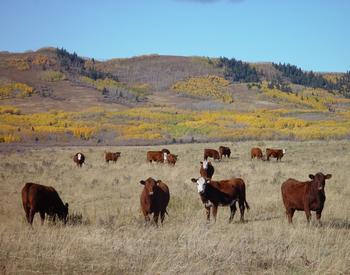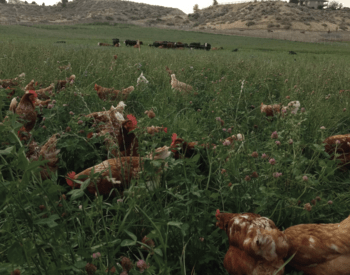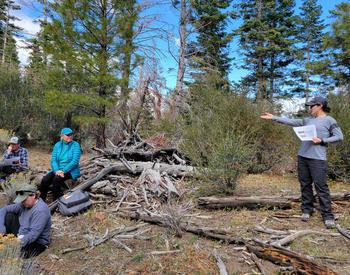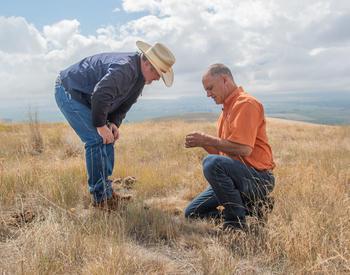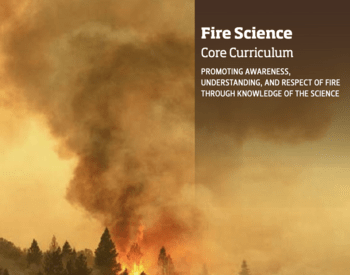BURNS, Ore. – Non-native grasses in the Northern Great Basin of eastern Oregon are invading the sagebrush steppe, ruining wildlife habitat, reducing grazing land and providing extensive fuel for wildfire.
An estimated 50% of the sagebrush ecosystem has disappeared, according to Dustin Johnson, Oregon State University Extension Service rangeland faculty and professor in the College of Agricultural Sciences. The battle is on to save the rest.
“Despite the fact that the interactive problems of invasive annual grasses and wildfire have degraded millions of acres, and are complex and difficult to solve, it is important to remember that much of our sagebrush rangelands are still in relatively good shape,” said Johnson. “This gives me a lot of hope that the ecosystem can be saved, but the losses and impacts caused by wildfire and invasives are mounting.”
As part of the effort to bring together relevant agencies, organizations and ranchers to address invasive grasses and their contribution to wildfire risk and shrinking rangeland, Johnson worked with High Desert Partnership and Oregon SageCon Partnership to produce the Invasive Annual Grass Workshop, a two-day virtual event in 2020 with 32 speakers, panelists and moderators.
The success of the workshop led to an opportunity for Johnson and Vanessa Schroeder, OSU Extension faculty research assistant, to work with Brenda Smith, executive director with High Desert Partnership, to guest edit a special peer-reviewed issue of Rangelands journal. The three were charged with outlining the issue, coordinating 33 authors, reviewing articles and assuring cohesion in article placement. The articles were written by workshop speakers based on their presentations.
“The special issue is an urgent call to action among rangeland managers and practitioners, because the time is now for a coordinated, concerted effort to protect and grow these intact areas of rangeland,” Johnson said. “Success requires persistence, partnerships and proactive management because these formidable problems are not going away anytime soon, do not respect property boundaries and are much more cost effective to address when prevented.”
Creating a forum for rangeland stakeholders
A record 250 people from nine western states joined the 2020 invasive grass webinar to hear sessions on invasive plants like cheatgrass, medusa head wild rye and ventenata that outpace native flora and create an environment beneficial to wildfire and detrimental to grazing. Overall, the event highlighted the complexity of dealing with invasive grasses and wildfire mitigation and leaned heavily on discussing strategies to address the issue.
The workshop created a forum for rangeland stakeholders who may not typically interact, said Schroeder, who works with “boots-on-the-ground” ranchers. To make the most of the opportunity to get people on the same page, Johnson and Schroeder intentionally paired diverse perspectives and expertise in order to integrate the different perspectives of the rangeland community of private landowners, agency managers and nonprofit organizations.
As they chose speakers, Schroeder said the goal was to present a coordinated issue that discussed solutions to managing invasive annual grasses and the fuel bed that builds up as they take over native habitat. These invaders infiltrate niches opened by disturbances like wildfire and overgrazing and thrive on the resource-rich environment following these incidents. Once depleted, native bunchgrass can’t compete and the invasive species take over. Protecting the remaining rangeland takes more than one entity, though.
“It’s incredibly important for us to work together,” Schroeder said. “The problem of invasive annual grasses and wildfire is untenable. We’re at a nexus. What we’ve been doing hasn’t been working. One entity can’t solve this problem. We need to be persistent to find a strategic approach. Now’s the time to tackle this issue. If we don’t, we’re going to lose our sagebrush steppe.”
To watch the workshop sessions or read presenters bios, see the High Desert Partnership website.
